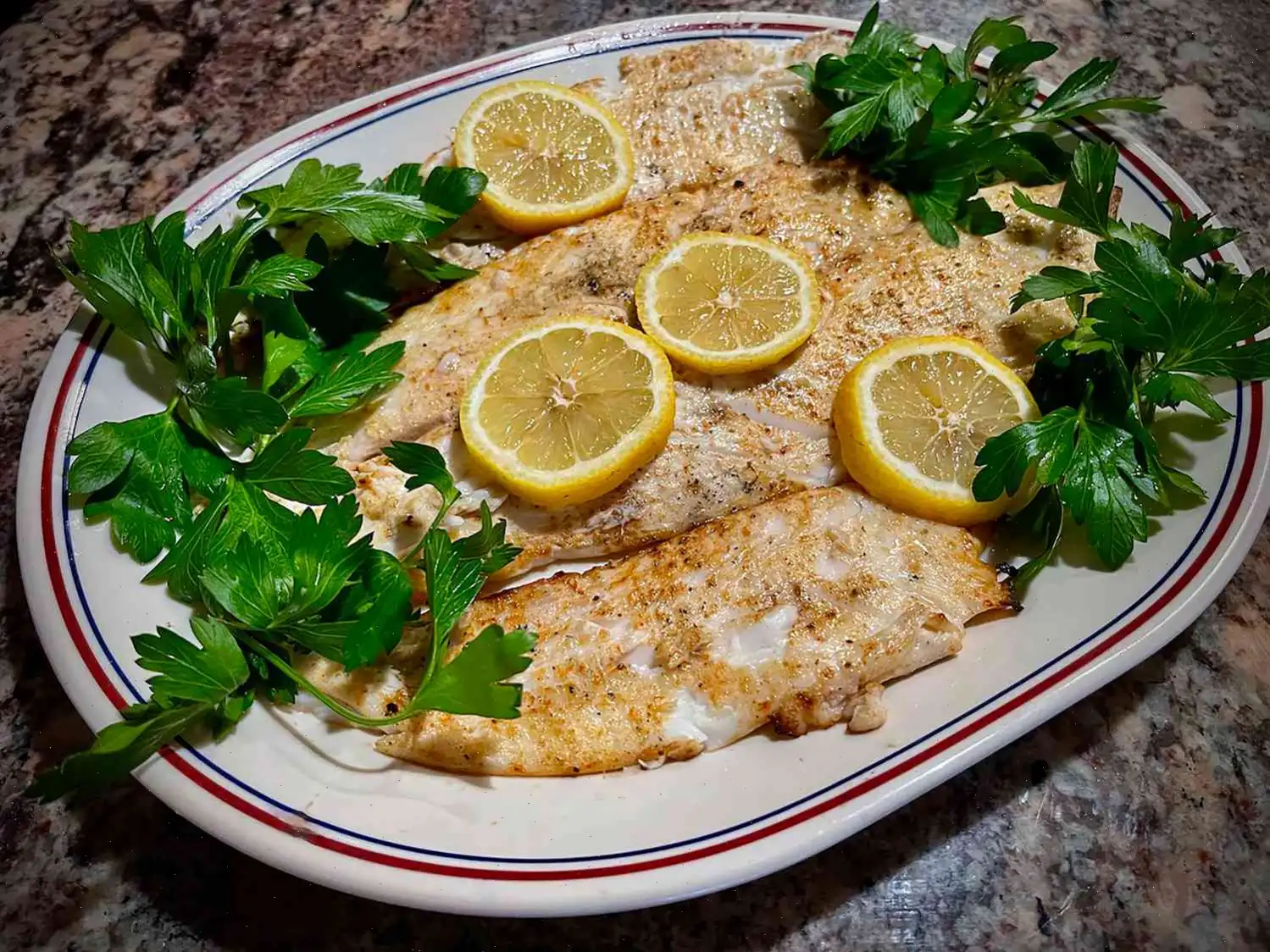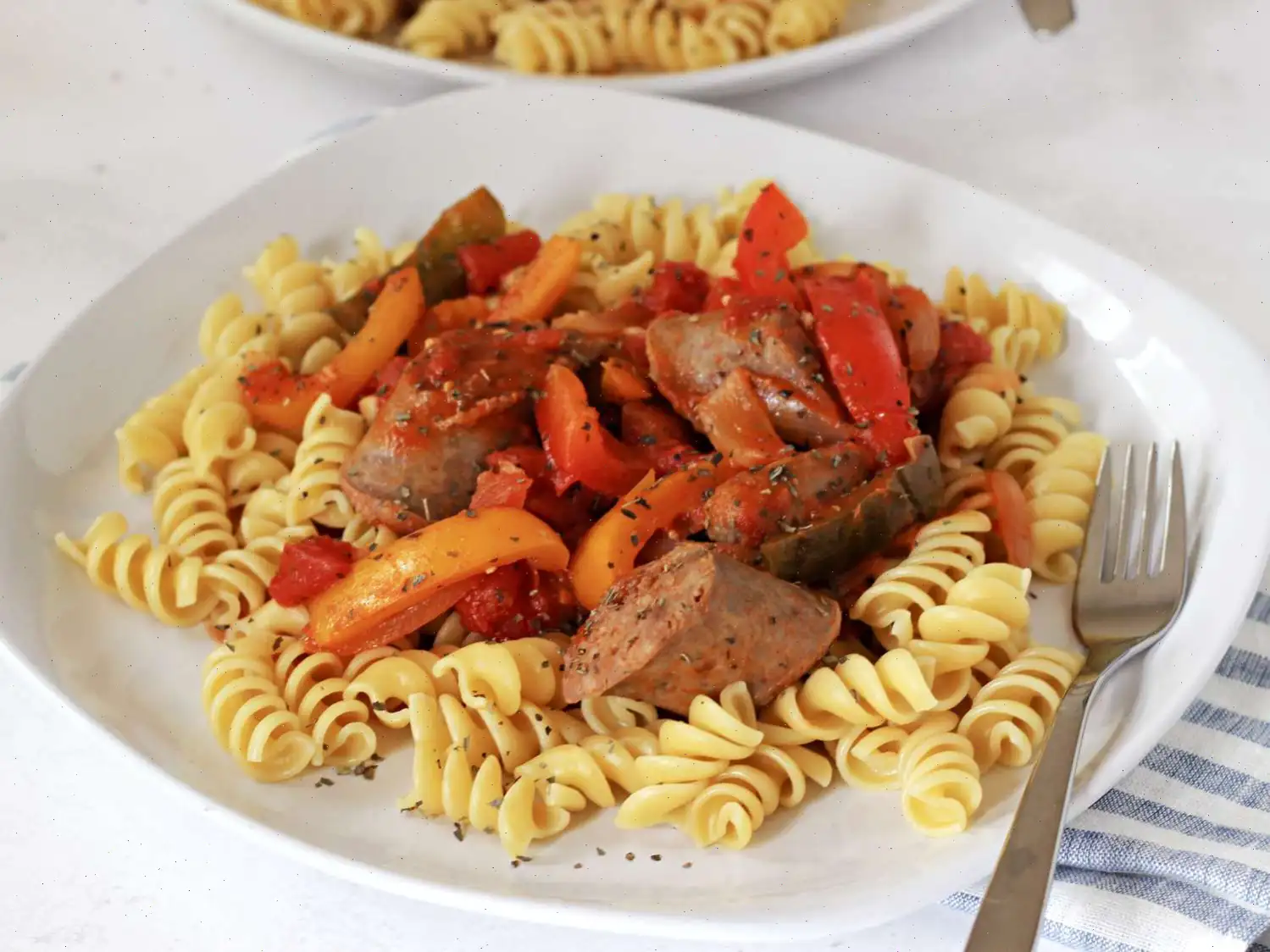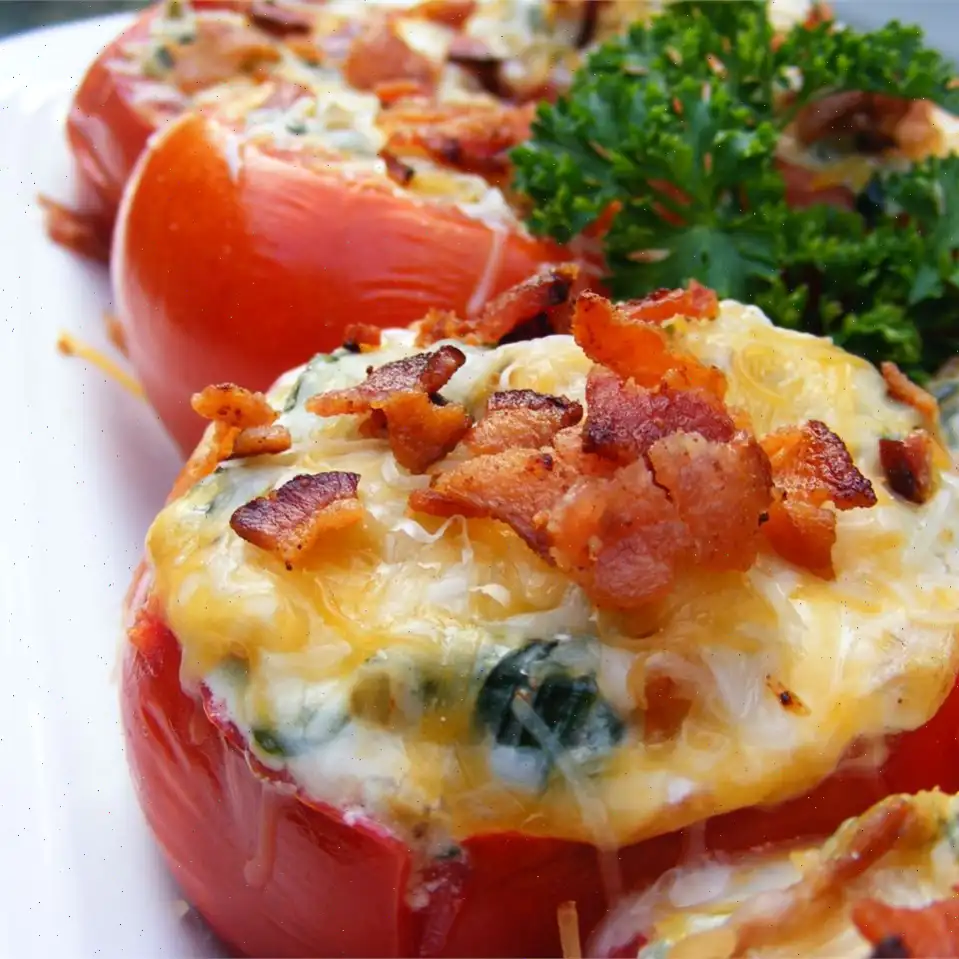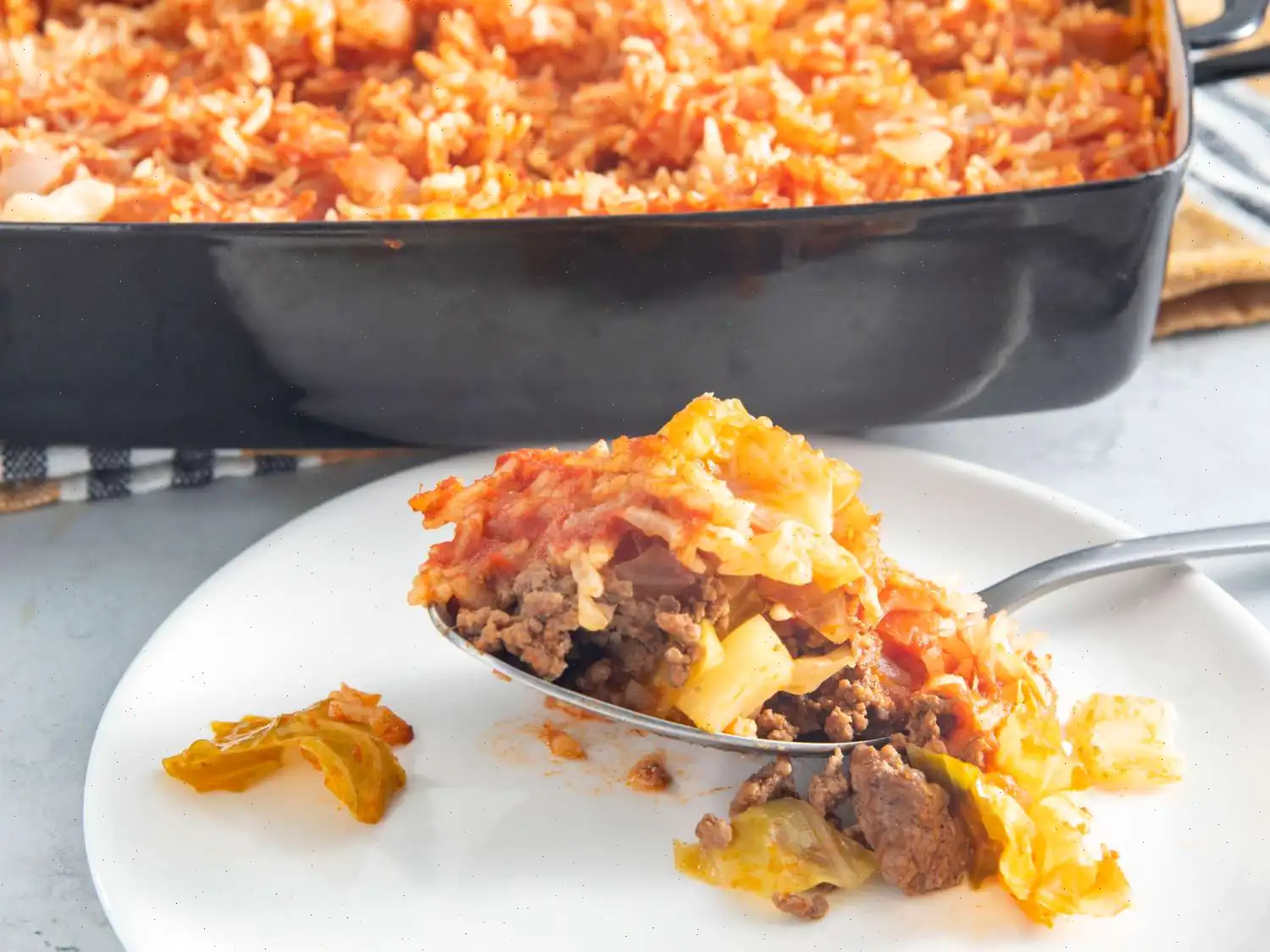
Easy Grilled Flounder Recipe
Ingredients:
- 1 pound flounder filets, without skin, about 3/4-inch thick at the thickest part
- 1 1/2 tablespoons buttermilk
- 1 teaspoon seafood seasoning, such as Old Bay
- 1/4 teaspoon smoked paprika
- Olive oil cooking spray
- Lemon slices for garnish (optional)
- Flat-leaf parsley sprigs for garnish (optional)
Directions:
- Clean the grates on an outdoor grill. Preheat the grill to 400F (200C) and lightly oil the grates.
- While the grill is heating up, prepare the fish. Pat the flounder filets dry using paper towels and brush each side with buttermilk.
- Season both sides of the filets with Old Bay seasoning and smoked paprika.
- Spray both sides of the filets with olive oil cooking spray.
- Once the grill is hot, place a grilling mat on the grates. Arrange the filets on the mat.
- Grill the fish for 3 to 4 minutes, or until the edges of the filets turn opaque white. If the filets are thicker than 3/4-inch, additional grilling time may be required.
- Carefully slide the grilling mat off the grill and onto a cutting board that is slightly larger than the fish.
- Place a serving plate over the filets and gently invert them onto the plate so the grilled side is facing up.
- Let the fish rest for 2 to 3 minutes. This will allow it to finish cooking.
- Garnish with lemon slices and flat-leaf parsley, if desired.
Nutrition Facts (per serving):
| Nutrition Item | Amount | % Daily Value |
|---|---|---|
| Calories | 101 | |
| Total Fat | 3g | 4% |
| Saturated Fat | 1g | 3% |
| Cholesterol | 64mg | 21% |
| Sodium | 576mg | 25% |
| Total Carbohydrate | 0g | 0% |
| Dietary Fiber | 0g | 0% |
| Total Sugars | 0g | |
| Protein | 18g | 35% |
| Vitamin C | 0mg | 0% |
| Calcium | 38mg | 3% |
| Iron | 0mg | 2% |
| Potassium | 238mg | 5% |
* Percent Daily Values are based on a 2,000 calorie diet. Your daily values may be higher or lower depending on your calorie needs.
The Story Behind Grilled Flounder
Grilled flounder has a rich culinary history that traces back to coastal communities in Europe and North America. Flounder, a flatfish known for its delicate texture and mild flavor, has been a staple for centuries in regions where fishing was a primary livelihood. Early fishermen would catch flounder along shallow coastal waters, grilling it over open flames or embers. The method of cooking whole flatfish quickly over high heat ensured that the tender flesh remained moist while developing a subtle smoky flavor. Over time, recipes evolved to include various seasonings and marinades, reflecting local tastes and available ingredients.
Regional Variations and Local Traditions
Different regions have put their own spin on grilled flounder. In the American South, for example, the dish is often seasoned with Old Bay or Cajun spices and paired with buttermilk or lemon juice to enhance the fish's natural sweetness. In Mediterranean regions, olive oil, garlic, and fresh herbs are commonly used, highlighting the influence of local olive groves and herb gardens. Each variation showcases how geography, climate, and culinary traditions shape the way a simple fish like flounder is enjoyed, making every regional version unique.
Distinguishing Flounder from Similar Dishes
Grilled flounder stands out from other white fish dishes, such as sole or tilapia, because of its remarkably thin, tender fillets. Unlike firmer fish that require longer cooking times, flounder cooks quickly and is easily overdone, which makes precise grilling essential. Its flat body and delicate texture distinguish it from rounder fish like snapper or cod, and its mild flavor allows the seasoning to shine without being overpowered. This sets it apart from baked or fried fish, which often rely on batter or coatings to add flavor and texture.
Where Youll Typically Find Grilled Flounder
Grilled flounder is commonly served in seafood restaurants along coastal regions, at backyard barbecues, and at summer festivals celebrating local catch. It is often paired with fresh vegetables, rice, or light salads, creating a simple yet elegant meal. Due to its delicate nature, it is usually presented on a platter garnished with lemon slices or herbs, emphasizing its freshness and visual appeal. The dish is also a favorite at casual dining establishments where seafood is a highlight of the menu.
Interesting Facts About Grilled Flounder
- Flounder can live up to 20 years in the wild, making sustainable fishing practices essential to preserve populations.
- The fishs flat body allows it to blend seamlessly into sandy ocean floors, which is why it is rarely caught by accident in traditional netting methods.
- In some cultures, flounder is considered a celebratory dish, often served during special family gatherings or seasonal festivals.
- Unlike many fish, flounder is naturally low in calories and fat while being rich in protein, making it a healthy choice for grilling.
- Modern grilling mats, as used in the Easy Grilled Flounder recipe, prevent sticking and allow for precise, even cooking of these delicate fillets.








